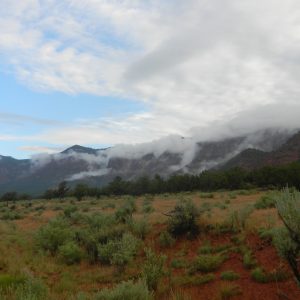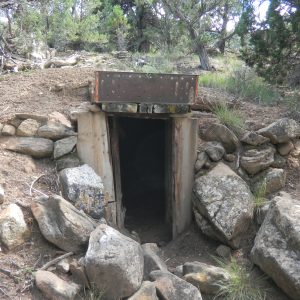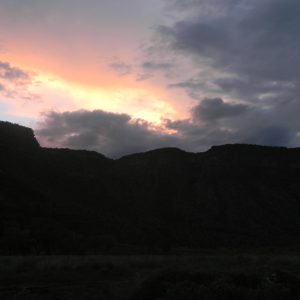Is it August already? Time is flying by before my eyes in that almost two months have already whizzed by out of my five month internship in Denver, Colorado and I feel like I’ve still only just begun. Our tasks have now altered from performing monitoring or seed collecting in blocks of a week, to being more intermixed together throughout a week. This variety doesn’t help slow down time, but makes this job very enjoyable and fun.
After seed scouting six sites for six days over a four week period (the two middle weeks vacant of Seeds of Success), we finally found a site with enough individuals and sufficient amount of fruits with plenty of seeds to reach at least our 10,000 seed quota from only 20% of the population and waited just the right amount of time for the fruits to ripen for healthy seeds, but not too late that they would all be dispersed and gone. Our first collection of this season was from Scutellaria brittonii, a skullcap group within the mint family, which was not an easy task, especially for mine and Sama’s first seed collection extravaganza!

Harvesting the fruit of Scutellaria Brittonii
This mint is only about 3 to 6 inches tall, grows in small scattered clumps on talus slopes of mountain sides in open pockets, and without their little lavender skull-looking flowers, they are very easy to miss. We did a lot of scrambling across steep slopes looking and harvesting Britton’s Skullcap fruits just off the path, or sometimes a ways down or up from the path. Another issue was that not all the fruits ripen at the same time. So, because of their spread-out distribution and many of the fruits not being ripe, it took us more than one day to collect an ample amount of seed for this program. Our first day, many of the fruits were not ripe enough, and a small fraction of the seeds were ready to be collected. Our second trip was quite the opposite with most of the fruits already gone and their tiny brown seeds dispersed. Our third try was to top off our collection to guarantee that we collected enough.

Seeds of Britton's Skullcap
Besides collecting seeds, we also have to collect data about the plant and the site we are collecting from. This includes the date(s) of this species’ collection, the eco-region, location, land formation, habitat, associated plants, estimated area of the collection, the population, and the number of plants sampled, average number of fruits per individual, and average seeds per fruit, slope, aspect, soil texture, soil color (from a chart), etc. After the collection is made and the data collected, the data is typed and printed onto a form and packaged with the seeds, and then shipped off to Bends, Oregon to be cleaned, analyzed, and determined if there are enough viable seeds for research and storage.

Fruit of Clematis hirsutissima
Thankfully, our second collection was on Clematis hirsutissima, a buttercup species that only took one day to collect, then shipped off the next day. Our third is currently in progress, collecting fleshy fruits of Rhus trilobata, Skunkbush Sumac, that will take at least one to two more trips to get more than 10,000 seeds. Each bush, when fruiting, has between 50 to 1,000 fruits, but each fruit only has one seed, which is why it will take us a while. Our first attempt barely gave us 5,000 seeds, but not all are viable and ripe, so we are planning on two more trips to guarantee our “Success” since not every year is so bountiful with this shrub. This fruit is also fun to collect because the fruits are very sticky, so we wear latex gloves to keep our hands clean, but also because it is in the same family as poison ivy and has been known to cause skin irritation for some people.

Saw a Hairstreak butterfly species while seed scouting one day 🙂
This is Jeffrey Flory from the Colorado State Office, signing off of the CLM blog.

















